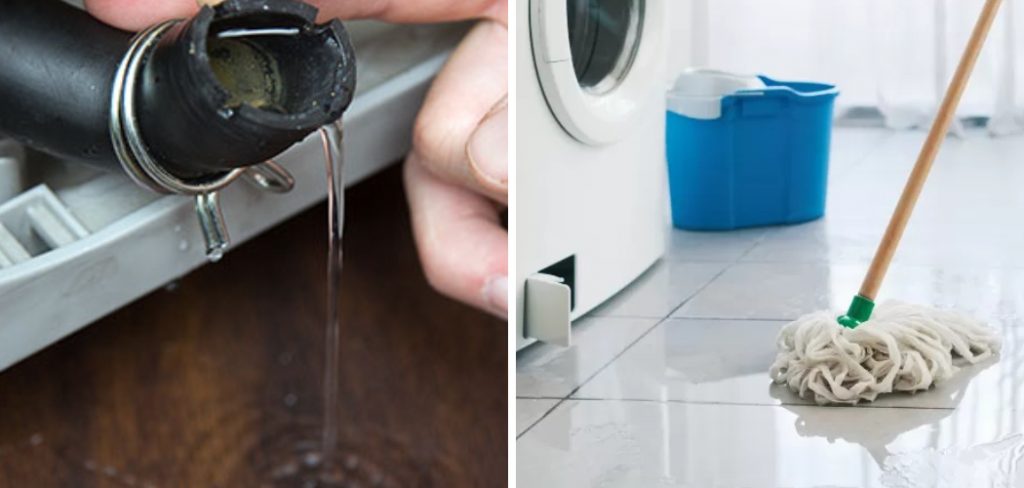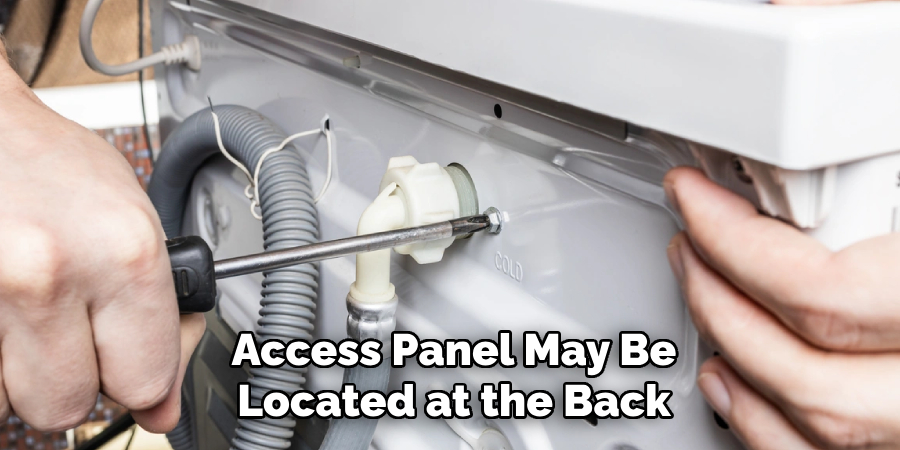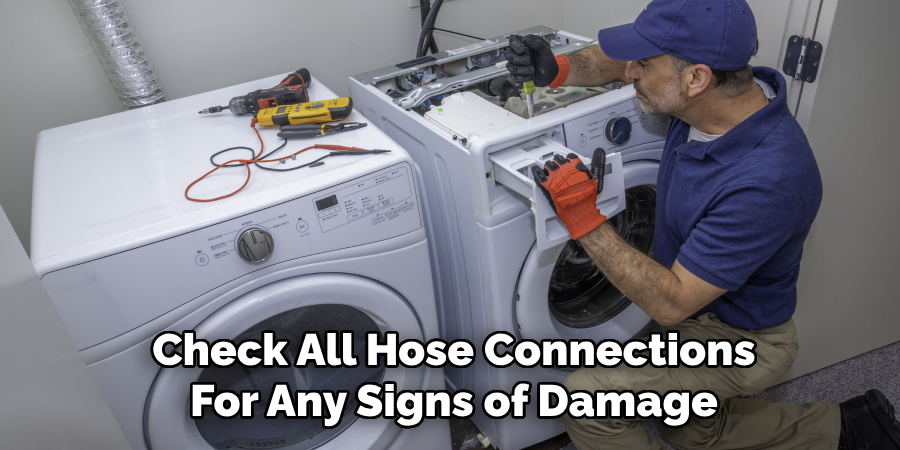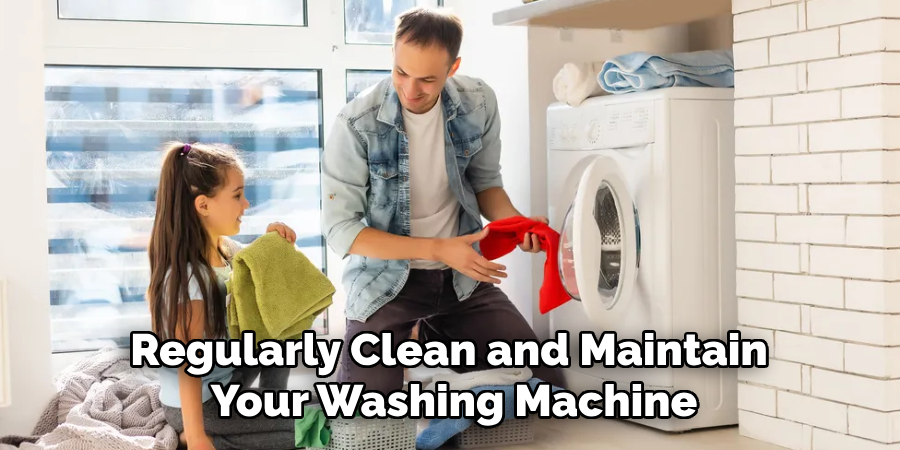A leaking washing machine can be a homeowner’s nightmare, leading to water damage and costly repairs if not addressed promptly. Understanding the root cause of the leak is essential for implementing the right solution and preventing future issues.
This guide on how to fix washing machine leaking from bottom will walk you through the common reasons a washing machine might be leaking from the bottom and provide step-by-step instructions on how to diagnose and fix the problem effectively.

Whether it’s a simple gasket replacement or a more complex issue, you’ll find the guidance you need to keep your washing machine running smoothly.
What is Causing the Leak?
There are several possible causes of a washing machine leaking from the bottom. Some of the most common reasons include:
Damaged or Worn Out Door Seal:
The door seal, also known as a gasket, is responsible for creating a watertight seal between the door and the washing machine tub. Over time, this seal can become damaged or worn out, leading to water leaking from the bottom of the machine.
Loose or Damaged Hose Connections:
The hoses that connect your washing machine to the water supply can become loose or develop cracks over time. This can result in leaks coming from the bottom of the machine.
Clogged Drain Hose:
If your drain hose becomes clogged with debris or lint, it can cause water to back up and leak from the bottom of the washing machine.

Faulty Water Inlet Valve:
The water inlet valve is responsible for filling the washing machine with water. If it becomes faulty, it can cause water to leak from the bottom of the machine.
Overloaded Machine:
An overloaded washing machine can put too much strain on the gasket and other components, causing them to fail and resulting in leaks from the bottom of the machine.
Needed Tools and Materials
Before you begin fixing your leaking washing machine, make sure you have the following tools and materials on hand:
Screwdriver:
You’ll need a screwdriver to remove the access panel and potentially other parts of your washing machine.
Pliers:
Pliers will come in handy for removing and tightening hose connections.
Wrench:
A wrench may be needed to adjust or replace the water inlet valve.
Replacement Gasket:
If your door seal is damaged, you’ll need a replacement gasket. Make sure to purchase one that is compatible with your specific washing machine model.
8 Step-by-step Guidelines on How to Fix Washing Machine Leaking From Bottom
Step 1: Unplug the Machine
Safety should always come first when working with electrical appliances. Unplug your washing machine from the electrical outlet to prevent any risk of electrical shock. Make sure the machine is completely powered down before you begin any repair work.
If your washing machine is hardwired into your electrical system, locate the circuit breaker and switch it off to ensure no power is flowing to the machine.
Step 2: Locate the Access Panel
To access the internal components of your washing machine, you will need to locate and remove the access panel. Depending on the model of your washing machine, the access panel may be located at the back, front, or bottom of the unit.

Back Panel:
On many top-loading machines, the access panel is situated at the rear. Use a screwdriver to remove the screws securing the panel and set them aside safely for reassembly.
Front Panel:
Some models, especially front-loading machines, may have an access panel at the front. Look for any screws or clips around the edges that need to be removed.
Bottom Panel:
For other models, the access panel may be underneath. Carefully tilt the machine to access the screws or clips holding the panel in place.
Once you have located the access panel, gently remove it to expose the inner components of the washing machine. This will allow you to inspect and diagnose the areas that could be causing the leak.
Step 3: Check the Door Seal
Inspect the door seal for any visible signs of damage or wear. This includes cracks, tears, or breaks in the seal. If you find any issues with the gasket, it will need to be replaced.
To remove the old gasket, gently pull it off from its position around the washing machine tub. Be careful not to damage other components as you do this. Once removed, clean any debris or buildup around the area before installing the new gasket.
Place the new gasket into position and carefully press it down to ensure a tight fit. You may need to use a bit of force to properly secure the gasket.
Step 4: Tighten or Replace Hose Connections
Check all hose connections for any signs of damage, looseness, or leaks. Use pliers to tighten any loose connections and replace any damaged hoses if necessary.

Make sure to turn off the water supply before disconnecting and replacing any hoses. Once you have replaced the hoses, turn the water supply back on and check for leaks.
Step 5: Clear Out the Drain Hose
Inspect the drain hose for any clogs or obstructions that could be causing water to back up and leak from the bottom of the machine. Use a plumber’s snake or a straightened coat hanger to clear out any debris.
If the drain hose still appears clogged, you may need to remove it completely and run water through it in a sink or tub to fully clear out any blockages.
Step 6: Check the Water Inlet Valve
If other components appear to be functioning properly, the issue may lie with the water inlet valve. This valve can become stuck open or closed, causing leaks from the bottom of the machine.
Depending on your washing machine model, you may be able to access and clean or fix the valve yourself. If not, it is best to call a professional for assistance as this requires more complex repair work.
Step 7: Run a Test Cycle
After completing all of the above steps, reassemble the access panel and plug your washing machine back in. Run a test cycle with an empty load to ensure that the leak has been fixed.
If you still notice leaks, double-check all of your work and inspect for any missed issues. If the problem persists, it may be best to call a professional for further assistance.
Step 8: Regular Maintenance
To prevent future leaks, make sure to regularly clean and maintain your washing machine. This includes wiping down the door seal after each use, checking hose connections periodically for damage, and running a cleaning cycle every few months to prevent buildup in the machine.
Following these steps on how to fix washing machine leaking from bottom will help you identify and fix any leaks from the bottom of your washing machine. Remember to always prioritize safety and call a professional if you are unsure about any repair work. Regular maintenance can also help prevent future issues, saving you time and money in the long run. Happy washing!
Frequently Asked Questions
Q: My Washing Machine is Not Leaking, but I Want to Prevent Future Leaks. What Should I Do?
A: Regular maintenance such as wiping down the door seal after each use and running a cleaning cycle every few months can help prevent future leaks from occurring. Checking hose connections periodically for damage is also recommended.
Q: Can I Use Any Gasket for My Washing Machine or Do I Need a Specific One?
A: It is best to purchase a gasket that is compatible with your specific washing machine model. You can usually find this information in the user manual or by contacting the manufacturer. Using a compatible gasket will ensure proper fit and function.
Q: How Often Should I Check My Washing Machine for Leaks?
A: It is recommended to check your washing machine regularly, especially if you notice any changes in its performance. It is also a good idea to inspect for leaks after moving the machine or performing repairs. Regular maintenance can also help prevent future leaks.
Q: Can I Fix a Leak from the Bottom of My Washing Machine Myself?
A: Depending on the cause of the leak, it may be possible to fix it yourself by following the steps outlined in this guide. However, if you are unsure or uncomfortable with any repair work, it is best to call a professional for assistance.

Conclusion
A leaking washing machine can be a frustrating issue to deal with, but it is not always a major problem. By following these step-by-step guidelines on how to fix washing machine leaking from bottom and performing regular maintenance, you can easily fix and prevent leaks from occurring. If you are still unable to resolve the issue or feel uncomfortable attempting these repairs yourself, do not hesitate to call a professional for assistance.
So don’t let that leaky washing machine dampen your laundry day – use these guidelines to get it back up and running smoothly! Happy washing!
